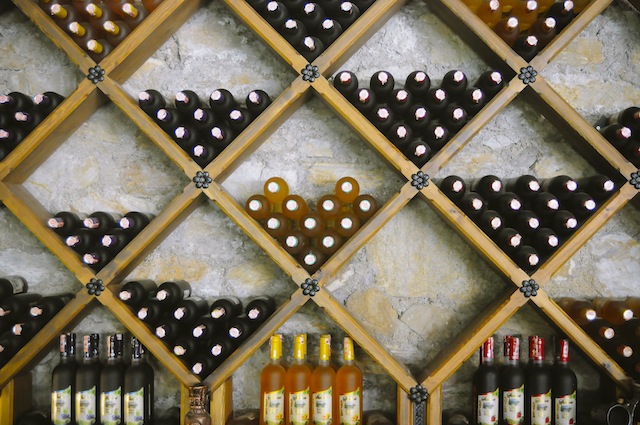
Despite its location, perched upon the slopes of a mountain in Anatolia, the village of Şirince isn’t Turkish. Nor, duly, are the traditions that sanctify its popularity. Its Greek identity is one of Turkey’s best-preserved and thriving examples of what happens when you swap whole populations because of conflicting religious affiliations.
In the case of Şirince, it was the forced exodus of its Greek Orthodox populace and the replacement with Greek Muslims as a result of a treaty that required a large-scale population exchange in 1923. And thus, it’s because of this mutual expulsion that a Turkish village — that is not quite Turkish — exists today.
Upon arriving, it’s the white-washed brick-and-stucco homes that call greatest attention to Şirince’s characteristic Greek flair. But step inside the village and witness the hoards of people that swirl in and around it, and you’ll see what brings the crowds –Turks and foreigners alike. Beyond the bucolic setting of a remote outpost of Greek heritage homes, it’s the wine. Fitted between traditional restaurants and small shops that sell handmade bars of soap and bundles of collected herbs, Şirince has a surprising number of shops that cater to Turkey‘s increasing thirst for domestic varietals, such as Öküzgözü and Emir, and European origin grapes, like Cabernet.
From the window of my dolmuş — a van which had been converted to a public bus — I could see the power of the local wine trade before I could exit. What appeared to be a wine museum blurred past my peripheral. And then a dotting of several wine houses, which proved to be eerily similar to one another, blew past. It wasn’t France, nor Spain, but something uniquely Turkish.

Like many I came to see the Greek heritage and, like others, to try the numerous samples of local wine. In Şirince, a village of 600, you don’t need a guide, only an open mind. Especially, if you’re one that self-describes to the term ‘wine aficionado,’ because the wine scene in Şirince isn’t like that of any old or new world wine destination. That is, rather than swirl and sniff your way to the subtle differences between a selection of burgundy reds, Şirince is stocked with a vibrant spectrum of ‘wines’ that beg the drinker to ask, “Wait, but is this wine?”
As I stepped into my first wine shop in Şirince, a restored and converted stable (which never yielded a name), I wasn’t given an introduction, but rather asked a question: “What fruit do you want to start with?” It wasn’t a rhetorical question. In Şirince, where one winery manages to convert 92 fruit varieties into ‘wine’, the question needs an answer.
I peppered the question with another, “What’s your favorite?”
The man — who still spoke Greek and learned the tradition from his displaced grandparents — answered quickly, “Blackberry. It’s my personal favorite.”
After slowly sipping my proffered free shot of blackberry wine, I didn’t pucker, but did hesitate to agree. Unexpected, I thought, like the idea of creating a blackberry wine itself. Which for the sake of differentiation and proper classification is called fruit wine by the locals; though oenophiles may question the inclusion of the word ‘wine’ at all.
After blackberry came a quick succession of other fruits that had, over the course of several months fermentation, been rendered alcoholic: Raspberry, strawberry, melon, peach, green apple, cherry, pomegranate, blueberry, kiwi. Think of your favorite fruit and there’s a good chance it had been made into wine.

It was this trend — showcasing fruit wines — that defined many shops that decorated Şirince. Among the stacked levels of the town, a scattering of a dozen such shops seem to exist and thrive. Each offers a similar take on sour cherry or kiwi wine with one difference — the wine label. Despite a few red vintages on display, people asked for the sweet and tart choices that Şirince is now known for. In fact, a wine tasting only includes a traditional red if it was requested.
If I felt confused by the idea of why so many fruit wines existed, I seemed alone in the matter. Şirince’s popularity speaks to the growing consumption of Turkish wine, even if many of the bottles aren’t traditional by any winemaker’s standard.
For me, Şirince is where wine making not only withstood the swap of peoples and cultures, but also came to flourish, albeit in a very different direction. One where kiwis and cherries are auspiciously involved and tart trends over dry.
Contributed by guest writer Anna Frisk.
Şirince. Photo courtesy of Anna Frisks.

Jessica Festa is the editor of the travel sites Jessie on a Journey (http://jessieonajourney.com) and Epicure & Culture (http://epicureandculture.com). Along with blogging at We Blog The World, her byline has appeared in publications like Huffington Post, Gadling, Fodor’s, Travel + Escape, Matador, Viator, The Culture-Ist and many others. After getting her BA/MA in Communication from the State University of New York at Albany, she realized she wasn’t really to stop backpacking and made travel her full time job. Some of her most memorable experiences include studying abroad in Sydney, teaching English in Thailand, doing orphanage work in Ghana, hiking her way through South America and traveling solo through Europe. She has a passion for backpacking, adventure, hiking, wine and getting off the beaten path.








